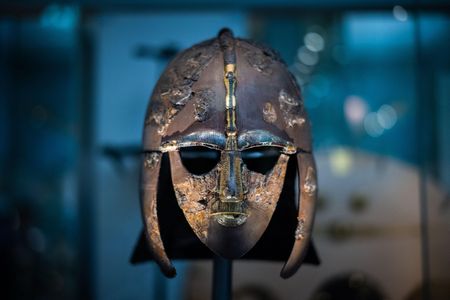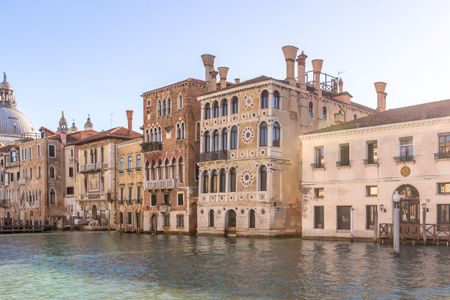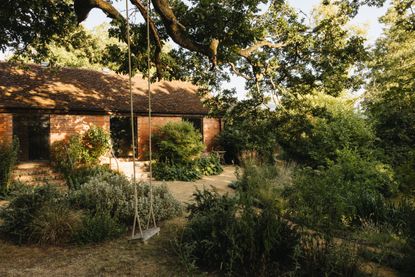-

This new hotel medi-spa in Morocco has got tongues wagging for all the right reasons — and it’s nearly as big as The White House
By Jennifer George
-
-

The 400-year-old floors perfectly preserved in the house that inspired Charles Dickens to create Miss Havisham's mansion
By John Goodall
-

Sophia Money-Coutts: A snob's guide to making it through Dry January
By Sophia Money-Coutts
-

From a spectacular funerary monument to a victory Armada portrait: Here are our must-see treasures in the East of England
By Charlotte Mullins
-

Best country houses for sale this week
By Country Life
-

It's the first Country Life Quiz of the Day in 2026. How much do you remember about last year?
By Country Life
-

‘Live in the country (or, failing that, Kensington Square) and wear navy’: A brief history of the colour that never goes out of style
By Deborah Nicholls-Lee
-
Exquisite houses, the beauty of Nature, and how to get the most from your life, straight to your inbox.
People & Places
-
-

Meg Walters: The BBC's 1995 adaptation of 'Pride and Prejudice' is the ultimate Millennial fairytale
-

The return of one of Europe's most iconic hotels is just the beginning for Bucharest
-

Britain's most entertaining (and a little bit salacious) country house scandals
-

Actor Jennifer Garner on Diane Keaton, 'collecting women' — and her consuming passions
-
Property
View all Property-

Best country houses for sale this week
By Country Life
-
-

A 300-year-old home with grace, style and history, yet unlisted and exempt from mansion tax
By Toby Keel
-

A Venetian palazzo that entranced John Ruskin and was painted by Monet is for sale — but beware, it’s cursed
By Rosie Paterson
-

The nearest thing you'll get to a beach house in London: this four-bedroom Georgian home for sale that's right by the water's edge
By Toby Keel
-

A huge farmhouse that mixes Georgian charm with an 80 foot party barn and a swimming pool
By Julie Harding
-

The 12 biggest country property sales of 2025, from 'one of the finest homes in the Cotswolds' to a £5 million cottage in Cornwall
By Penny Churchill
-

Country Life's top 10 property articles of 2025, from the homes of JFK and Alan Titchmarsh to the castle for sale for the first time in 700 years
By Toby Keel
-
Our expert voices
Interiors
View All Interiors-

How an eco-friendly interior designer transformed a former milking parlour into a multi-purpose space in the middle of the Pandemic
By Grace McCloud
-
-

How Britain’s biggest and best country houses are decking the halls (and façades) for Christmas
By Bella Fulford
-

Giles Kime: Cushions, rugs, upholstered stools and sofa blankets are the ingredients of a pleasing new trend
By Giles Kime
-

John Goodall: Restoration is 'an act of recycling', but we need a system that encourages it
By John Goodall
-

Making space in a Georgian terraced Chelsea cottage
By Arabella Youens
-

Moths and memories of the Russian Revolution: Why it's worth saving that tired old rug
By Catriona Gray
-

How one family went about creating a welcoming kitchen in one of England's neo-Palladian houses
By Arabella Youens
-

How do you make a 300-year-old Baronial castle fit for modern-day living?
By Arabella Youens
-
LIFE & STYLE
View All LIFE & STYLE-
-

Sophia Money-Coutts: A snob's guide to making it through Dry January
By Sophia Money-Coutts
-

From a spectacular funerary monument to a victory Armada portrait: Here are our must-see treasures in the East of England
By Charlotte Mullins
-

‘Live in the country (or, failing that, Kensington Square) and wear navy’: A brief history of the colour that never goes out of style
By Deborah Nicholls-Lee
-

The artistic and historical treasures in Ireland that you must visit at least once in a lifetime
By Charlotte Mullins
-
COUNTRYSIDE
View All THE COUNTRYSIDE-
-

Endangered bumblebees, sifting spoonbills and trespassing tortoises: Britain's railway network is a wildlife haven
By Vicky Liddell
-

Gavin Plumley: Shakespeare’s country isn’t Stratford-upon-Avon, it’s the quiet and beautiful Herefordshire countryside where Hamnet was filmed
By Gavin Plumley
-

Two turtle doves: Why the endearing bird is an animal for all seasons, not just Christmas
By Mark Cocker
-
Gardens
View All Gardens-

The Convent Garden of Il Redentore: A Venice masterpiece that's finally opened its gates after 450 years of total privacy
By Tim Richardson
-
-

Country Life's top 10 garden stories of 2025, from Alan Titchmarsh's hardy annuals to David Beckham's Cotswolds paradise
By Toby Keel
-

Helmingham Hall: The ancient garden at a medieval hall where the drawbridge is still pulled up every night
By Tilly Ware
-

The plants to give for Christmas which will keep flowering for years
By Jane Wheatley
-

How to create spectacular arrangements for your Christmas table
By Amy Merrick
-

There are a billion microbes in a teaspoon of soil. Leaving the leaves to Nature feeds and nourishes them
By Isabel Bannerman
-
ART & CULTURE
View all ART & CULTURE-
-

Forget Bond, the understated George Smiley is fiction's greatest spy
By Emma Hughes
-

‘I wasn’t really sure that I wanted to be a ballet dancer’: The English National Ballet's prima ballerina on playing Clara in The Nutcracker and her consuming passions
By Lotte Brundle
-

The policeman turned goat-herder turned beautician, whose goats' milk soap became a sensation
By Jane Wheatley
-

The exquisite Christmas decorations that spark childhood joy, and the decoration-maker who creates them
By Jane Wheatley
-
Travel
View All Travel-

This new hotel medi-spa in Morocco has got tongues wagging for all the right reasons — and it’s nearly as big as The White House
By Jennifer George
-
-

Country Life's top 10 travel articles of 2025, including the Scottish survival experience beloved by David Beckham and what a A-list ski resort does when it stops getting snow
By Rosie Paterson
-

The railway revolution: 'The most profound change to British society since the arrival of the Normans, perhaps even the Romans'
By Jonathan Self
-

Lisa Johnson: Instagram is fuelling overtourism, putting wildlife at risk and ruining our sense of adventure
By Lisa Johnson
-

What does the future hold for the exclusive Caribbean island that shuns shoes, spectacle and social media
By Rosie Paterson
-

What is everyone talking about this week: Would you move to Dubai?
By Will Hosie
-
Food & Drink
View All Food & Drink-

The 12 types of hangover, from 'Backwards Binoculars' to 'Titanic', and how to cure them all
By Olly Smith
-
-

'We begin making in May and start packing and despatching in November — it’s carnage': How the Cotswolds' favourite cake-makers get ready for Christmas
By Jane Wheatley
-

Tim Wilson of The Ginger Pig on the perfect Christmas ham
By Jane Wheatley
-

East London's salmon smokehouse is full of secrets
By Tom Howells
-

Four festive recipes from the Country Life Archive that have (thankfully) fallen out of favour
By Melanie Bryan
-

Country Life's luxury editor's Christmas gift ideas for foodies, from traditional hampers to nifty kitchen gadgets
By Amie Elizabeth White
-

‘Calf’s brains have a bland, gentle richness that soothes and cossets': Tom Parker Bowles on the joys of eating offal
By Tom Parker Bowles
-







